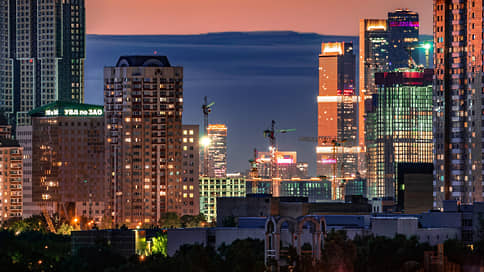Housing on the secondary market has risen in price by 1% over the month
[ad_1]

The average cost of housing in the secondary market of Russia for the month increased by only 1%. At the same time, analysts say that there is no stable upward trend in prices. Seeing a revival in demand, sellers tend to raise prices, but in the end offset this growth with discounts. Depreciation of the ruble and the expectation of an increase in the Central Bank rate may become new incentives for making deals, but the market is also influenced by seasonal factors.
The average cost of secondary real estate in 18 largest regional markets of Russia (16 million-plus cities, Moscow and Leningrad regions) increased by 0.7% over the month, to 127.3 thousand rubles. for 1 sq. m. Such data is given in CIAN.Analytics, recalling that a similar trend was observed in the previous month. At the same time, the head of CIAN.Analytics, Alexei Popov, says that there is no upward trend in prices on the market. “Otherwise, we would see a leading increase in the cost of new products, but they rise in price in sync with the market,” he says. According to the “Etazhi”, in Russia as a whole, secondary real estate now costs an average of 113.1 thousand rubles. for 1 sq. m. Growth compared to the previous month was 0.5%, compared to the same period last year – 4.1%.
The average cost of a secondary apartment in Russia, according to Avito Real Estate, is now 4.45 million rubles. This is 1% higher than the value for the previous month, year-on-year growth was 11%.
According to CIAN.Analytics, among regional markets the most pronounced price increase on secondary housing for the last month occurred in Rostov-on-Don: the average rate increased by 1.8%, to 113.8 thousand rubles. for 1 sq. m. Dynamics in Omsk amounted to 1.3%, up to 95.8 thousand rubles. for 1 sq. m. In Surgut and Saratov, according to “Etazhi” data, the secondary housing has risen in price by a little more than 1% over the month, to 114.9 thousand rubles. and 72.5 thousand rubles. for 1 sq. m respectively. In St. Petersburg, according to analysts, the increase was 0.5%, up to 192 thousand rubles. for 1 sq. m. The average supply budget in the city, according to Avito Real Estate, is now 8.3 million rubles, which is 4% lower than the same period last year.
In Moscow, according to CIAN.Analitiki, secondary real estate costs an average of 303.3 thousand rubles. for 1 sq. m. Over the month, this figure increased by 0.7%, over the year – decreased by 3.4%. In the analytical center of the company “Inkom-Nedvizhimost” they add that the average budget of the proposal is now 13.79 million rubles, having increased by 0.3% over the month. In New Moscow the indicator is lower – 9.79 million rubles, an increase of 0.1%. In outskirts of Moscow the value remained stable – 6.54 million rubles.
Sergei Shloma, director of the secondary market at Inkom-Nedvizhimost, says that the exposition in Moscow is not growing: liquid properties are quickly leaving the market, while uninteresting ones are accumulating. According to the results of June, he calls demand quite active: it exceeded last year’s figure twice, the year before last – by 12%. Mr. Shloma connects the recovery with the desire to find an understandable asset for savings, the realization of pent-up demand and the flow of buyers from the segment of new buildings. Violetta Khachaturova, head of Apple Real Estate sales, noticed a revival in demand in the high-budget housing segment: there are more impressions and transactions. The volume of exposition against this background, according to her, is reduced.
The decline in supply is typical for all major regional markets in general.
According to CIAN.Analytics, 216 thousand ads are now available to users, which is 4% less than last month.
The head of the secondary and out-of-town areas of Avito Nedvizhimost, Sergey Khakhulin, believes that demand on the market as a whole is increasingly shifting towards finished housing: the cost of acquiring it is now generally more affordable than new buildings. Stable demand encourages owners to raise prices, said Ildar Khusainov, Director of Floors. Although the latter, according to him, is often offset by a discount: the average monthly discount increased from 4.6% to 5.1%. The expert notes that buyers now look at an average of one and a half to two times more objects than a year earlier, trying to choose the best option with the maximum discount. “But for sellers, this behavior creates a feeling of heightened interest, and they tend to raise prices,” he argues.
Alexey Popov does not rule out that the ruble weakening will become a new input for the secondary real estate market: at the moment it can bring buyers to the market who previously postponed the conclusion of the transaction. Another stimulus, according to the expert, may be the intensification of discussions on raising the Central Bank rate. “But the seasonal factor and the decline in business activity can partly offset these impulses,” the expert warns.
Although Sergei Shloma expects that the summer will be quite active in the secondary market of Moscow. But the expert sees no prerequisites for a noticeable increase or decrease in prices. Correction, according to his forecasts, can occur only if developers lower the cost of the initial proposal by 15-20%. “In this case, new buildings will again be able to compete with the secondary market and the owners will be forced to adjust prices within 5%,” says Mr. Shloma. Violetta Khachaturova is counting on the stabilization of the cost of secondary housing. Sergei Khakhulin also sees no prerequisites for a decrease in demand or prices, calling the market quite active at the moment.
[ad_2]
Source link





